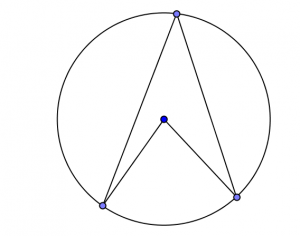I just finished listening to a great “blogcast” that Tony Wagner gave as an interview for Blogtalkradio about his new book “Creating Innovators:The Making of Young People Who Will Change the World.” Kind of a neat idea for a book in which he has done some great research looking into how some new ideas got started by young people, how their creativity was fostered in their childhood, parenting and education, etc. Definitely worth taking a listen to.
One of the things that Prof. Wagner talks about in his interview is the idea of fostering the creativity that leads to innovation. As he spoke to these great innovators that he interviewed, they could all name at least one teacher in their career who had a “significant impact” on their learning. Interestingly, the characteristics of that teacher were often very similar, Wagner said. They were known for encouraging collaboration and often assessing it, creating a classroom that was often interdisciplinary and problem-based (of course) and empowered his or her students to be creative in their problem-solving and make mistakes. Why is this not surprising? To all of us who strive to foster the practice of creativity and hope to allow our students to become innovative and original thinkers, we have known that these are the values that we should uphold in the classroom. I’m so glad that Wagner did this great research and wrote this wonderful book.
However, we also know the realities of the limitations that many of us teachers have that come with the system within which we teach. I have spoken to so many teachers from around the country who, with all good intentions are striving to make their classrooms more problem-based and encourage creativity. They are truly trying to be the change they want to see in mathematics education today. But the fear of standardized testing that is not assessing these values, affecting their evaluations or public awareness of parental or administrative dissatisfaction or vocal disagreement with these goals, needs to be balanced with a teacher’s desire to move ahead. Limitations of a teacher’s time, energy and their own creativity keep them from being able to proceed without support from like-minded colleagues and leaders in their district.
At the end of the interview, Prof. Wagner talks about his move from the Harvard GSE to his new position in the Technology and Entrepreneurship Center at Harvard. He says something like he’s found that he doesn’t belong in a school of education because he’d like to be somewhere where the focus is “explicitly on innovation.” My question is why can’t that be a school of education? or a school at all? Why can’t learning be explicitly innovative and thought about as innovation in general? I believe all of us are capable of thinking of our schools as places of learning where students are being innovative as they learn. Every day I ask my students in my classroom to attempt to think of something new to them. It may not be innovative to me, but as long as it is in their eyes and their brain is attempting to see something in a new way on their own, I believe they are being innovative.
I would encourage us all to continue to be the change that we want to see in schools and not try to find other places where we think we belong. It’s so important that we continue to make these changes no matter how small and I hope to continue to be a resource in your own classroom innovation!




